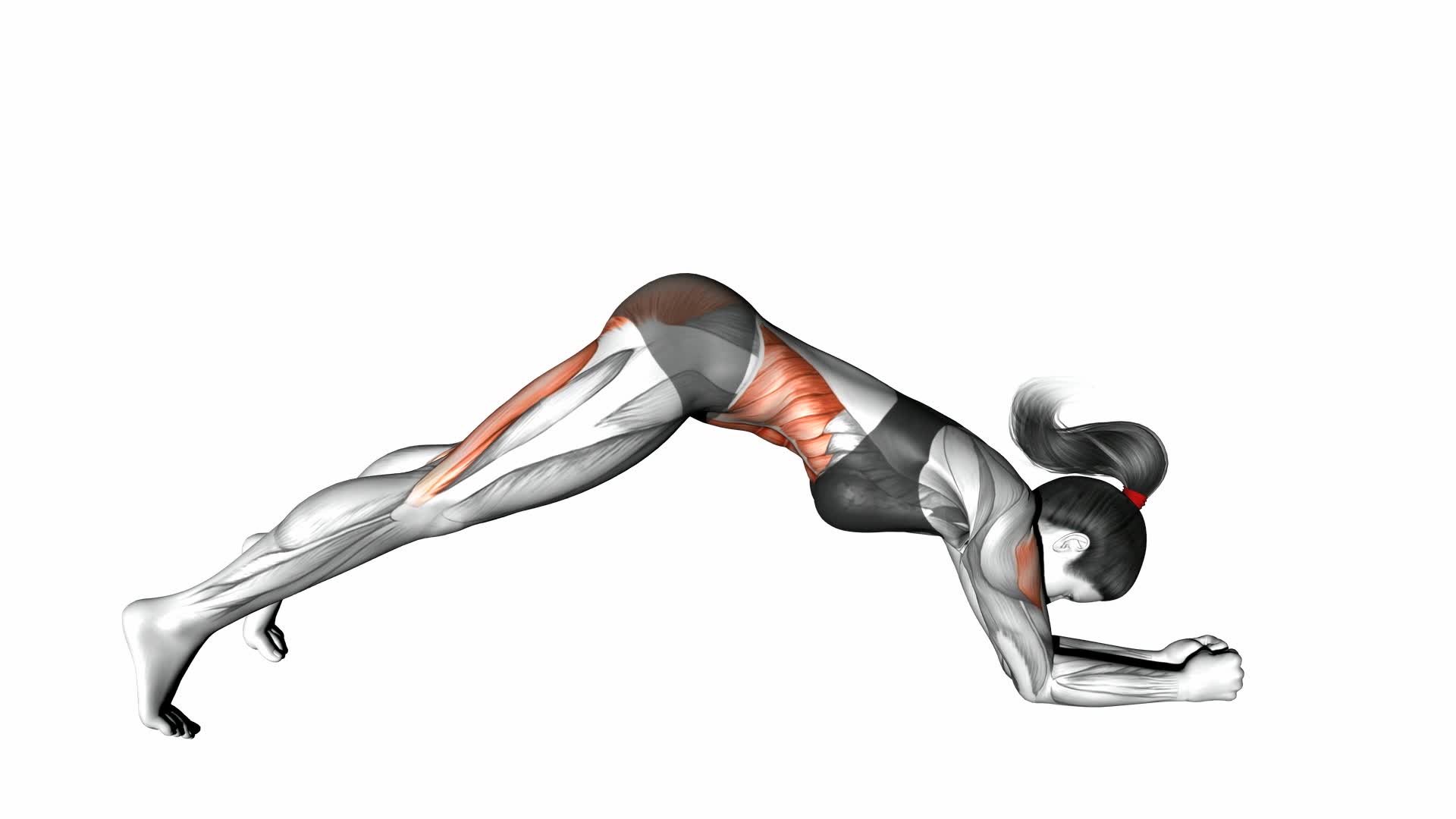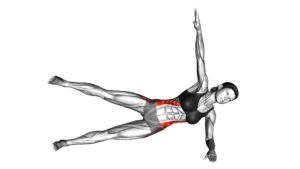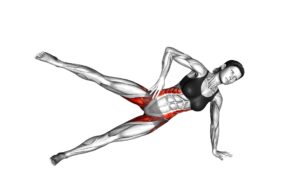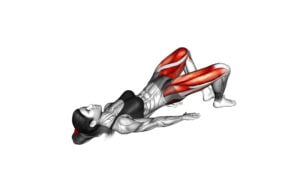Hip Raise Bridge – Video Exercise Guide & Tips

Are you looking for an effective exercise to strengthen your core and glutes? Look no further than the hip raise bridge. This simple yet powerful move targets key muscle groups and can be easily incorporated into your workout routine.
Watch This Exercise Video
In this article, we will guide you through the proper form and technique, provide variations to challenge yourself, and share common mistakes to avoid.
Get ready to take your fitness to the next level with the hip raise bridge.
Key Takeaways
- Hip raise bridge targets glutes and core muscles
- Proper form and technique include maintaining a neutral spine and avoiding arching the back or letting knees fall outwards
- Variations such as single leg hip raise and weighted hip raise can challenge yourself
- Common mistakes to avoid include lifting hips too high, allowing knees to cave inwards, and rushing through the exercise
Benefits of Hip Raise Bridge
Increase your core strength and improve your lower body stability with the benefits of the Hip Raise Bridge.
This exercise is highly effective in targeting your glutes and core muscles, providing you with improved core strength and increased glute activation.
The Hip Raise Bridge primarily targets your gluteus maximus, which is the largest muscle in your buttocks. By engaging and activating this muscle, the exercise helps to strengthen and tone your glutes, leading to a firmer and more sculpted backside.
Additionally, the Hip Raise Bridge also engages your core muscles, including your abdominal muscles and lower back muscles. These muscles play a crucial role in stabilizing your body and supporting your spine. By regularly performing this exercise, you can develop a stronger core, which can improve your overall posture and reduce the risk of lower back pain.
To perform the Hip Raise Bridge, lie on your back with your knees bent and feet flat on the ground. Lift your hips off the ground, forming a straight line from your knees to your shoulders. Hold this position for a few seconds before slowly lowering your hips back down. Repeat for the desired number of repetitions.
Incorporating the Hip Raise Bridge into your workout routine can lead to improved core strength and increased glute activation. Add it to your fitness regimen to reap the benefits and achieve a stronger, more stable lower body.
Proper Form and Technique
To perform the Hip Raise Bridge with proper form and technique, start by lying on your back with your knees bent and feet flat on the ground. Place your arms by your sides, palms down. Engage your core and glutes as you lift your hips off the ground, pushing through your heels. Your body should form a straight line from your knees to your shoulders. Avoid arching your back or letting your knees fall outwards. Hold the position for a few seconds before slowly lowering your hips back down to the starting position.
There are a few common misconceptions to be aware of when performing the Hip Raise Bridge. One is that lifting your hips too high can strain your lower back. It's important to focus on maintaining a neutral spine throughout the exercise. Another misconception is that using momentum to lift your hips is acceptable. However, this can reduce the effectiveness of the exercise. Instead, focus on using your glutes and core to initiate the movement.
If you're looking to modify or progress the Hip Raise Bridge, there are a few options. For beginners, you can start by performing the exercise with your feet on an elevated surface, such as a step or bench. This reduces the range of motion and makes it easier to perform. To progress the exercise, you can try single-leg variations or add resistance by placing a weight on your hips. These modifications and progressions can help challenge your muscles and continue to improve your strength and stability.
Variations to Challenge Yourself
Take your Hip Raise Bridge to the next level by incorporating challenging variations. These advanced modifications will help you progress and continue to challenge your muscles. Here are four hip raise bridge progressions to try:
- Single Leg Hip Raise: Lift one leg off the ground and perform the hip raise bridge using only one leg. This variation adds an extra challenge to your glutes and hamstrings.
- Weighted Hip Raise: Hold a dumbbell or kettlebell on your hips while performing the bridge. The added weight increases the resistance and intensifies the exercise.
- Stability Ball Hip Raise: Place your feet on a stability ball instead of the ground. This requires more core stability and engages additional muscles in your lower body.
- Decline Hip Raise: Elevate your feet on an elevated surface, such as a step or bench, while performing the bridge. This variation increases the difficulty by placing more emphasis on your glutes and hamstrings.
Incorporating these advanced modifications into your hip raise bridge routine will challenge your muscles in new ways and help you continue to make progress. Remember to maintain proper form and technique throughout each variation to maximize the benefits and reduce the risk of injury.
Common Mistakes to Avoid
Avoid these common mistakes when performing the hip raise bridge exercise to maximize its effectiveness and prevent injury.
- One common mistake is lifting your hips too high. While it may seem like raising your hips as high as possible will give you a better workout, it actually puts excessive strain on your lower back. Instead, focus on lifting your hips until your body forms a straight line from your shoulders to your knees.
- Another mistake to avoid is allowing your knees to cave inwards. This can put unnecessary stress on your knees and lead to instability. To prevent this, engage your glutes and press your knees outwards throughout the movement.
- Lastly, avoid rushing through the exercise. Performing the hip raise bridge too quickly can compromise your form and reduce its effectiveness. Take your time and focus on maintaining proper technique throughout each repetition.
By avoiding these common mistakes, you can ensure that you're getting the most out of your hip raise bridge exercise and minimizing the risk of injury.
Now that you know the common mistakes to avoid, let's move on to some tips for incorporating the hip raise bridge into your workout routine.
Tips for Incorporating Hip Raise Bridge Into Your Workout Routine
When incorporating the hip raise bridge into your workout routine, focus on engaging your glutes and maintaining proper form. This exercise is great for strengthening your glutes, hamstrings, and core, but it's important to perform it correctly to avoid injury and get the most out of your workout.
Here are some tips to help you incorporate the hip raise bridge into your routine effectively:
- Start with the basic hip raise bridge and master the form before progressing to more advanced variations.
- Make sure to keep your feet hip-width apart and flat on the ground throughout the exercise.
- Engage your glutes and core as you lift your hips off the ground, creating a straight line from your knees to your shoulders.
- Control the movement and avoid arching your back or letting your knees cave in.
Hip raise bridge modifications:
- To make the exercise easier, you can perform it with your feet elevated on a bench or stability ball.
- To make it more challenging, you can add resistance by placing a weight or resistance band across your hips.
Hip raise bridge progressions:
- Once you have mastered the basic hip raise bridge, you can progress to single-leg variations or try incorporating other exercises such as hip thrusts or glute bridges into your routine.
Remember to listen to your body and start with a weight and difficulty level that's suitable for your fitness level.
Frequently Asked Questions
What Are the Primary Muscle Groups Targeted During a Hip Raise Bridge?
During a hip raise bridge, the primary muscle groups targeted are your glutes and hamstrings. This exercise helps to strengthen and tone these areas, giving you a more sculpted and defined lower body.
Can the Hip Raise Bridge Be Modified for Individuals With Lower Back Pain?
If you're dealing with lower back pain, there are modified variations of the hip raise bridge that can provide lower back support. These modifications can help reduce strain on your lower back while still targeting the primary muscle groups.
How Often Should the Hip Raise Bridge Be Performed for Optimal Results?
For optimal results, you need to consider the frequency of performing the hip raise bridge. It's important to find the right balance. Doing this exercise too often can lead to overtraining and potential muscle imbalances.
On the other hand, not doing it frequently enough may slow down your progress. It's recommended to start with 2-3 times per week and gradually increase as your strength and stability improve.
Are There Any Recommended Warm-Up Exercises Before Attempting the Hip Raise Bridge?
Before attempting the hip raise bridge, it's important to do recommended warm-up exercises. These exercises help prepare your muscles and prevent injury.
Warm-ups like leg swings, glute bridges, and hip circles can help activate the muscles in your lower body.
It's also crucial to focus on maintaining proper form throughout the exercise to maximize its effectiveness. Proper form ensures that you're targeting the right muscles and reducing the risk of strain or discomfort.
Is It Necessary to Use Equipment or Weights While Performing the Hip Raise Bridge?
When performing the hip raise bridge, you might be wondering if you need to use equipment or weights. Well, the good news is that you don't necessarily need them! You can still get a great workout without any additional resistance.
However, if you want to challenge yourself further, using resistance bands for the hip raise bridge can be a great option. Just make sure to maintain proper form and technique throughout the exercise to maximize its effectiveness.
Conclusion
In conclusion, the hip raise bridge is a simple yet effective exercise that targets your glutes, hamstrings, and core muscles.
By incorporating proper form and technique, you can maximize the benefits and avoid common mistakes.
Additionally, there are variations available to challenge yourself and make the exercise more advanced.
Whether you're a beginner or an experienced gym-goer, adding the hip raise bridge to your workout routine can help improve your strength, stability, and overall fitness level.

Author
Years ago, the spark of my life’s passion ignited in my mind the moment I stepped into the local gym for the first time. The inaugural bead of perspiration, the initial endeavor, the very first surge of endorphins, and a sense of pride that washed over me post-workout marked the beginning of my deep-seated interest in strength sports, fitness, and sports nutrition. This very curiosity blossomed rapidly into a profound fascination, propelling me to earn a Master’s degree in Physical Education from the Academy of Physical Education in Krakow, followed by a Sports Manager diploma from the Jagiellonian University. My journey of growth led me to gain more specialized qualifications, such as being a certified personal trainer with a focus on sports dietetics, a lifeguard, and an instructor for wellness and corrective gymnastics. Theoretical knowledge paired seamlessly with practical experience, reinforcing my belief that the transformation of individuals under my guidance was also a reflection of my personal growth. This belief holds true even today. Each day, I strive to push the boundaries and explore new realms. These realms gently elevate me to greater heights. The unique combination of passion for my field and the continuous quest for growth fuels my drive to break new ground.







